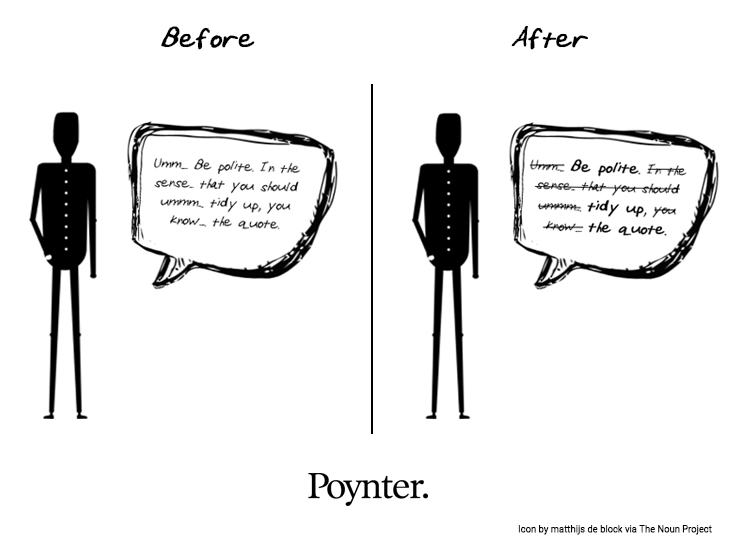In the almost 40-year history of the Poynter Institute, there have been few topics that generate as much debate among journalists as how to handle quotes.
I love it when a dogmatic reporter argues, “I only use the exact words that a person says, nothing more or less.” Then comes my cross-examination: “Do you include every time the source says ‘like’ or ‘you know’?” “If the mayor says ‘gonna’ do you ever change it to ‘going to’?” The reporter grumbles. It’s my Perry Mason moment.
One of the benefits of moving my office from one end of Poynter to the other has been the purging of my files and the occasional discovery of something worth saving and sharing. In one dusty file I found a list of “eight tips on handling quotes.”
Here it is with some elaboration, plus seven more.
1. Be truthful.
Quotes should be faithful to the words and intended meaning of the speaker. My goal is not to trap a source into making a mistake. It is to make public a meaningful statement.
2. Adding language to quotes is more dangerous than taking stuff out, although both can distort meaning.
Distortion by subtraction is necessary in the very selection of quotes. Distortion by addition can get you fired.
3. Because of language prejudice on race and class, be careful with slang and dialect.
In “The Elements of Style,” E.B. White advises “Do not use dialect unless your ear is good…and you are a devoted student of the tongue you hope to reproduce.”
4. That said, the American language is a great treasure.
If everyone you quote sounds like you, your readers are in trouble. Listen to NPR to get a feel for how skilled reporters and editors reveal the diversity of American speech.
5. Be polite.
Tidy up the quote rather than make someone sound stupid. Too many journalists have a double standard: they may clean up the mayor, but not the cranky old lady complaining to City Council.
6. It’s not a good idea to blend quotes from different interviews without a signal to readers.
The farther apart the interviews are in time, there more transparent the reporter should be.
7. When you quote, imagine that someone has taped the interview, even if you have not.
It can be a problem if you quote someone in print and then see the source on television the next day using different words than the ones you thought you captured.
8. No one takes notes at the speed of sound.
It’s OK to reconstruct a quote using both notes and memory. When you do this, it’s always best to read the quote back to the source. Be guided by the golden rule here.
Here are some more tips on using quotes in your stories:
9. Avoid echo quotes, ones that repeat the words that you just wrote.
10. Begin with the idea that you are the writer, that you can write it better than the source can say it. When that is not the case, use the quote.
11. Get a good human voice high in the story.
12. Only use the best part of the quote. Don’t let that part be hidden by less interesting or important words. When using, say, a quote of two sentences, try placing the attribution in the middle so that the parts of the quote stand out.
13. Prefer quotes in reports but dialogue in stories.
14. Many of these tips apply to “sound bites” for television and “actualities” for radio.
15. Remember how badly you were quoted as a source. Don’t do that.
Related: The Art of the Interview: Master Class with Jacqui Banaszynski








